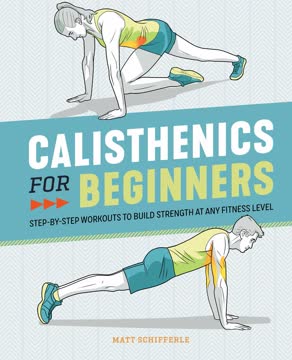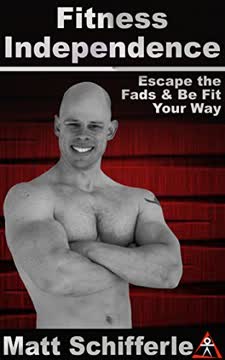Key Takeaways
1. Calisthenics: The Art of Beautiful Strength
"Calisthenics transforms vacant lots and neglected playgrounds into urban oases of social and cultural discovery."
Empowering and accessible. Calisthenics is a form of physical training that uses your own bodyweight for resistance, offering a versatile and accessible approach to fitness. It combines strength, mobility, endurance, and flexibility into a comprehensive workout regimen.
Adaptable to any level. Whether you're a beginner or an advanced athlete, calisthenics can be tailored to your fitness level. The discipline offers a wide range of exercises that can be modified to increase or decrease difficulty, making it suitable for everyone from those recovering from injuries to high-performing athletes.
Minimal equipment required. One of the greatest advantages of calisthenics is its simplicity. You don't need expensive gym memberships or specialized equipment. With just your body and gravity, you can perform effective workouts anywhere, anytime.
2. Foundation First: Master Basic Movements
"All impressive growth comes from a strong foundation."
Focus on fundamentals. The key to success in calisthenics lies in mastering basic movements before progressing to more advanced techniques. These foundational exercises build strength, stability, and proper form, which are crucial for preventing injuries and achieving long-term progress.
Key basic movements:
- Push-ups (various forms)
- Pull-ups and rows
- Squats and lunges
- Planks and core exercises
- Dips
Progressive difficulty. As you become proficient in these basic movements, you can increase difficulty by adjusting leverage, changing hand positions, or incorporating more challenging variations. This gradual progression ensures continuous improvement while maintaining proper form and technique.
3. Progressive Overload: The Key to Continuous Improvement
"Even these Level 3 techniques can be developed well beyond the scope of this book."
Gradual increase in challenge. Progressive overload is the principle of gradually increasing the stress placed on your body during exercise. In calisthenics, this can be achieved by:
- Increasing repetitions
- Decreasing rest time between sets
- Performing more challenging variations of exercises
- Adding weight (weighted vests, ankle weights)
- Increasing time under tension
Consistent progress. By consistently challenging your body with slightly more difficult exercises or routines, you stimulate muscle growth, strength gains, and improved endurance. This principle ensures that you continue to make progress over time, preventing plateaus in your fitness journey.
4. Core Strength: The Foundation of All Movement
"These muscles, your core, contribute to almost every form of activity you perform."
Central to all exercises. Core strength is crucial in calisthenics as it provides stability and power for all movements. A strong core improves balance, posture, and overall performance in other exercises.
Key core exercises:
- Planks (various forms)
- Hollow body holds
- Leg raises
- Russian twists
- L-sits
Beyond aesthetics. While a strong core can lead to visible abs, its true value lies in its functional benefits. A powerful core reduces the risk of lower back pain, improves athletic performance, and enhances everyday movements.
5. Push and Pull: Balancing Upper Body Exercises
"Push and pull moves both require strength in your core muscles for stability."
Balanced development. Incorporating both pushing and pulling exercises ensures balanced muscle development in the upper body. This balance is crucial for preventing injuries and achieving symmetrical strength and aesthetics.
Push exercises:
- Push-ups (standard, diamond, wide)
- Dips
- Pike push-ups
- Handstand push-ups
Pull exercises:
- Pull-ups
- Chin-ups
- Rows (inverted, Australian)
- Muscle-ups
Progression path. Start with easier variations like incline push-ups and assisted pull-ups, gradually working your way up to more challenging exercises as your strength improves.
6. Lower Body Power: Squats, Lunges, and Beyond
"The squat movement will condition every muscle in your lower body, including your quads, calves, hamstrings, and hips."
Foundational lower body exercises. Squats and lunges form the backbone of lower body calisthenics, working multiple muscle groups simultaneously and improving overall leg strength and stability.
Key lower body exercises:
- Bodyweight squats
- Lunges (forward, reverse, side)
- Bulgarian split squats
- Pistol squats
- Calf raises
Functional strength. These exercises not only build muscle but also improve functional strength for everyday activities like climbing stairs, lifting objects, and maintaining balance.
7. Flexibility and Recovery: Essential for Long-Term Success
"A proper workout is not always about pushing yourself as hard as possible."
Balance of effort and recovery. While intense workouts are important for progress, adequate recovery and flexibility work are crucial for preventing injuries and ensuring long-term success in your calisthenics journey.
Recovery techniques:
- Dynamic stretching
- Static stretching
- Foam rolling
- Yoga or mobility routines
- Adequate sleep (7-9 hours per night)
Importance of rest days. Incorporate rest days into your routine to allow your muscles to repair and grow stronger. Active recovery, such as light cardio or stretching, can be beneficial on these days.
8. Nutrition: Fueling Your Calisthenics Journey
"Your body is an incredible machine, and, like any machine, it can only function well when you give it the right fuel."
Balanced diet. A nutritious diet is crucial for supporting your calisthenics training. Focus on whole foods, including:
- Lean proteins (chicken, fish, tofu)
- Complex carbohydrates (whole grains, sweet potatoes)
- Healthy fats (avocados, nuts, olive oil)
- Fruits and vegetables
Hydration. Proper hydration is essential for performance and recovery. Aim for at least 8 glasses of water per day, adjusting based on activity level and climate.
Meal timing. Consider timing your meals around your workouts. A meal containing carbohydrates and protein 1-2 hours before exercise can provide energy, while a similar meal within 30 minutes after exercise can aid in recovery.
9. Goal Setting: The Roadmap to Success
"The clearer you can envision what you want, the greater the chances that it will happen."
SMART goals. Set Specific, Measurable, Achievable, Relevant, and Time-bound goals to guide your calisthenics journey. For example: "Perform 10 consecutive pull-ups within 3 months."
Short-term and long-term goals. Balance short-term goals (weekly, monthly) with long-term aspirations to maintain motivation and track progress effectively.
Regular reassessment. Review and adjust your goals periodically based on your progress and changing priorities. This flexibility allows for continuous improvement and maintains motivation.
10. Mindset: Overcoming Mental Barriers
"No one ever accomplished more in life by constantly berating themselves with negative self-talk."
Positive self-talk. Cultivate a growth mindset by focusing on progress rather than perfection. Replace negative thoughts with positive affirmations and celebrate small victories along your journey.
Embrace challenges. View difficult exercises or plateaus as opportunities for growth rather than insurmountable obstacles. Each challenge overcome is a step towards your goals.
Consistency over intensity. Remember that consistent, moderate effort over time yields better results than sporadic intense workouts followed by long periods of inactivity.
11. Creating Your Own Workouts: Tailoring Calisthenics to Your Needs
"Calisthenics has a way of exposing weaknesses that may have been hiding in plain sight for many years."
Personalized approach. As you progress in your calisthenics journey, learn to create workouts tailored to your specific goals, strengths, and weaknesses.
Workout structure:
- Warm-up (5-10 minutes of light cardio and dynamic stretching)
- Skill work (practice more challenging movements)
- Strength training (focus on progressive overload)
- Conditioning (high-intensity exercises for cardiovascular health)
- Cool-down (static stretching and mobility work)
Balanced routine. Ensure your workout plan includes a balance of pushing, pulling, leg, and core exercises. Adjust the intensity and volume based on your current fitness level and goals.
Last updated:
FAQ
What is "Calisthenics for Beginners" by Matt Schifferle about?
- Comprehensive Calisthenics Guide: The book is a step-by-step manual for anyone interested in starting or improving their calisthenics (bodyweight training) practice, regardless of fitness level.
- Foundational to Advanced: It covers everything from the basics of what calisthenics is, to detailed exercise programs, nutrition, goal setting, and recovery.
- Holistic Fitness Approach: Schifferle emphasizes not just strength, but also mobility, endurance, flexibility, and mindset for a well-rounded fitness journey.
- Customizable and Accessible: The book is designed to be infinitely adaptable, requiring minimal equipment and allowing readers to tailor routines to their own needs and goals.
Why should I read "Calisthenics for Beginners" by Matt Schifferle?
- Accessible for All Levels: Whether you’re a complete beginner or looking to refine your skills, the book provides clear, progressive programs suitable for everyone.
- Minimal Equipment Needed: Schifferle’s approach allows you to train anywhere, anytime, without the need for a gym or expensive gear.
- Focus on Sustainable Habits: The book goes beyond workouts, teaching readers how to set goals, track progress, and develop healthy eating and recovery habits.
- Empowering Mindset: It addresses common mental barriers like self-doubt and frustration, helping readers build confidence and resilience.
What are the key takeaways from "Calisthenics for Beginners" by Matt Schifferle?
- Bodyweight Training is Powerful: Calisthenics can build strength, mobility, and endurance without external weights, making it highly adaptable and effective.
- Consistency Over Perfection: Progress comes from regular practice and tracking, not from following a perfect routine or pushing to exhaustion.
- Nutrition and Recovery Matter: Eating whole foods, listening to your body, and prioritizing rest are as important as the workouts themselves.
- Mindset is Crucial: Positive self-talk, realistic goal setting, and enjoying the process are essential for long-term success.
How does Matt Schifferle define calisthenics in "Calisthenics for Beginners"?
- Bodyweight Resistance Training: Calisthenics is training that uses your own bodyweight for resistance, rather than external weights or machines.
- Greek Roots: The word comes from the Greek "kallos" (beauty) and "sthenos" (strength), meaning a beautiful form of strength training.
- Highly Adaptable: Schifferle stresses that calisthenics can be as easy or as advanced as you need, and can be customized for any goal or ability.
- Holistic Benefits: It’s not just about muscle—calisthenics improves mobility, balance, endurance, and overall health.
What are the main benefits of calisthenics according to "Calisthenics for Beginners"?
- Portability and Convenience: You can train anywhere with minimal equipment, making it easy to stay consistent.
- Full-Body Development: Exercises work multiple muscle groups, improving strength, mobility, endurance, and flexibility simultaneously.
- Adaptability: Calisthenics can be scaled for any fitness level, from rehabilitation to advanced athletic performance.
- Efficient Workouts: A handful of basic exercises can provide comprehensive fitness benefits, saving time and energy.
What foundational concepts and strategies does Matt Schifferle recommend before starting calisthenics?
- Understand Muscle Groups: Learn the anatomy and function of major muscle groups to train effectively and safely.
- Gather Essential Gear: While minimal equipment is needed, Schifferle suggests comfortable clothing, proper footwear, hydration, and a workout log.
- Prioritize Nutrition: Focus on whole foods, control portions, and listen to hunger cues for optimal performance and recovery.
- Set Clear Goals: Define specific, meaningful, and realistic goals to guide your training and avoid "goal hijacking."
How are the calisthenics programs structured in "Calisthenics for Beginners"?
- Three Progressive Levels: The book offers Level 1 (Start Strong), Level 2 (Go Deeper), and Level 3 (Power Up) programs, each building on the previous.
- Movement Patterns Focus: Exercises are grouped by core, hip-driven, knee-driven, push, pull, and heart rate boosting movements.
- Detailed Instructions: Each exercise includes step-by-step instructions, safety tips, variations, and performance goals.
- Flexible Templates: Workouts are designed to be mixed, matched, and adjusted based on individual needs and progress.
What are some key exercises and movement patterns featured in "Calisthenics for Beginners"?
- Core Movements: Hollow body hold, lying leg raise, hanging leg raise, and side/starfish planks for core strength and stability.
- Push Movements: Incline push-ups, floor push-ups, archer push-ups, and handstand push-ups for upper body pushing strength.
- Pull Movements: Incline rows, Australian pull-ups, pull-ups, and towel hangs for pulling strength and grip.
- Leg and Hip Movements: Box squats, split squats, Bulgarian split squats, hip bridges, and calf raises for lower body development.
- Cardio/Heart Rate Boosters: Mountain climbers, squat thrusts, burpees, ski hops, and cross-punches for cardiovascular fitness.
How does "Calisthenics for Beginners" by Matt Schifferle address nutrition and eating habits?
- Whole Foods Emphasis: Schifferle recommends focusing on natural, minimally processed foods for optimal health and performance.
- Prepare Your Own Meals: Taking control of what, how much, and when you eat is key to supporting your goals.
- Liquid Calories Warning: Avoid high-calorie beverages and prioritize water or low-calorie drinks.
- Flexible Guidelines: Use the "stoplight strategy" (green, yellow, red light foods) to manage your environment and make healthy choices.
What advice does Matt Schifferle give on recovery, flexibility, and mindset in "Calisthenics for Beginners"?
- Prioritize Recovery: Cool down stretches and restorative poses are essential for reducing stress and promoting long-term progress.
- Healthy Habits: Incorporate rest, sleep, and stress management as integral parts of your fitness routine.
- Positive Mindset: Avoid using exercise as punishment; focus on enjoyment, self-compassion, and leaving "a little in the tank."
- Deal with Setbacks: Recognize that self-doubt and frustration are normal, and use them as opportunities to reflect and adjust.
How can readers build and track their own workouts using "Calisthenics for Beginners"?
- Set Clear Goals: Start by defining what you want to achieve—fat loss, muscle gain, or functional ability.
- Plan Weekly Routines: Schifferle suggests three full-body calisthenics workouts per week, with flexibility to adjust as needed.
- Track Progress: Use a workout log to record exercises, sets, reps, and notes for future improvement.
- Focus on Consistency: The most important factor is regular practice and gradual progression, not rigid adherence to a specific plan.
What are the best quotes from "Calisthenics for Beginners" by Matt Schifferle and what do they mean?
- “If it’s not fun, why do it?” – Emphasizes the importance of enjoyment in fitness for long-term adherence and success.
- “You can define what calisthenics is for you and your life.” – Encourages readers to personalize their training and not be limited by others’ perceptions.
- “The true key ingredient for your success isn’t the nitty-gritty of the routine—it is being consistent with your exercise plan so that you improve from one workout to the next.” – Stresses that consistency and progression matter more than perfect routines.
- “Fitness habits that compromise your well-being are neither healthy nor productive.” – Reminds readers that health and quality of life should always be the priority in any fitness journey.
Review Summary
Calisthenics for Beginners receives mixed reviews, with an average rating of 3.87 out of 5. Readers appreciate its straightforward approach and beginner-friendly content, praising the clear explanations and illustrations. However, some criticize the need for equipment and the lack of more advanced exercises. The book is commended for its goal-setting advice, nutrition tips, and recovery information. While some find it too basic, others value its simplicity and practicality for starting a fitness routine at home, especially during COVID-19 restrictions.
Similar Books
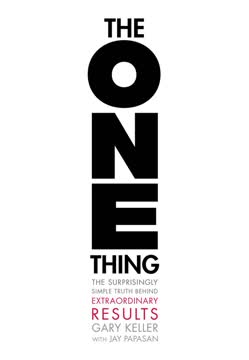

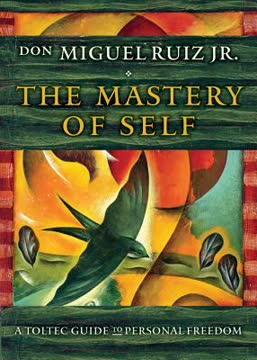
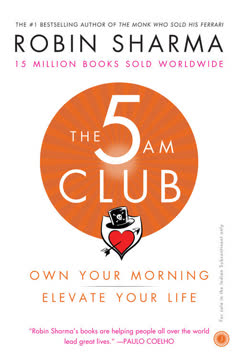
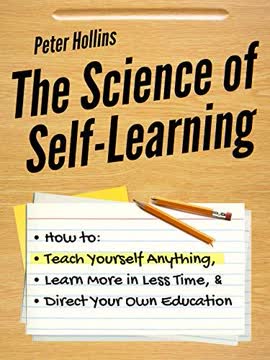
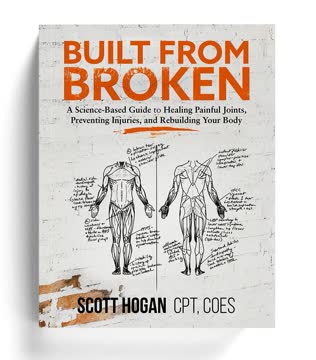
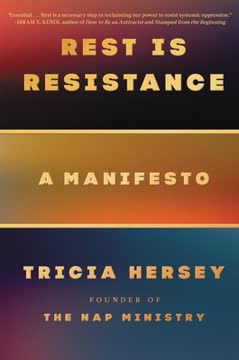
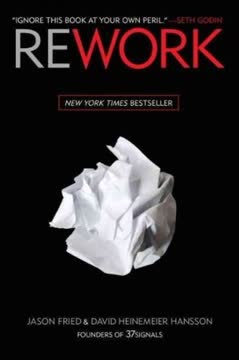

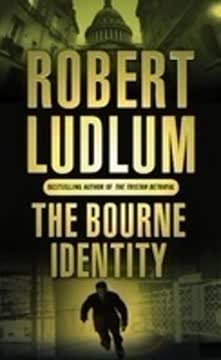
Download PDF
Download EPUB
.epub digital book format is ideal for reading ebooks on phones, tablets, and e-readers.
